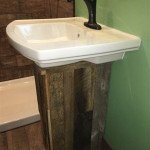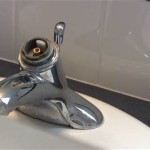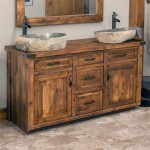What Kind of Paint is Good for Bathroom Ceilings?
Bathroom ceilings, constantly exposed to moisture and humidity, require a specific type of paint to ensure longevity and prevent damage. Choosing the right paint can significantly impact the appearance and durability of your bathroom. This article will explore the characteristics of suitable paint for bathroom ceilings, highlighting the most important considerations for a successful paint job.
Moisture Resistance
The most crucial factor in choosing bathroom ceiling paint is its resistance to moisture. Exposure to steam, condensation, and occasional spills can lead to mold and mildew growth, compromising both the aesthetic appeal and the structural integrity of your ceiling. Therefore, opting for paints designed to resist moisture is essential.
Paints specifically formulated for bathrooms and high-moisture areas typically contain mildewcide, a chemical agent that inhibits fungal growth. These paints also have a mildew-resistant finish, preventing spores from attaching to the surface. Look for terms like "mildew-resistant," "moisture-resistant," or "bathroom and kitchen paint" on the label.
Durability and Washability
Bathrooms are often prone to splashes and accidental stains. A durable and washable paint for your bathroom ceiling is essential to ensure easy maintenance. High-quality bathroom paints typically have a durable acrylic formula that can withstand scrubbing with mild detergents.
Opting for a paint with a higher scrub rating, often indicated by a number on the label, provides increased durability and ease of cleaning. A higher number signifies greater resistance to abrasion and repeated cleaning, making the paint suitable for high-traffic areas like bathrooms.
Finish and Reflectivity
The finish of bathroom ceiling paint also plays a role in the overall appearance and functionality. While matte and satin finishes are popular choices, satin paints are generally recommended for bathroom ceilings. Satin paints offer a subtle sheen that reflects light without being overly glossy, creating a more visually appealing and brighter space.
Additionally, the reflectivity of the paint impacts the perceived brightness of the room. Lighter colors and satin finishes generally reflect more light, enhancing the perceived brightness, making the bathroom feel more spacious and inviting.
Other Considerations
Apart from the key characteristics mentioned above, consider these additional factors when choosing bathroom ceiling paint:
-
Color:
While personal preference dictates the color choice, lighter colors tend to reflect more light, creating a brighter and more spacious feel in a bathroom. -
VOC Levels:
Volatile organic compound (VOC) levels in paint can contribute to indoor air pollution. Consider opting for low-VOC or zero-VOC paints, particularly for smaller, more enclosed spaces like bathrooms.
Selecting the right type of paint for your bathroom ceiling involves balancing several factors. By prioritizing moisture resistance, durability, and appropriate finish, you can choose a paint that enhances the aesthetic appeal while ensuring long-term protection for your bathroom.

Best Paint For Steamy Bathroom Ceiling Eco Inc

Best Paint For Steamy Bathroom Ceiling Eco Inc

Ceiling Paint For Bathroom Prestige Painting Gta

Best Paint For Steamy Bathroom Ceiling Eco Inc

25 Beautiful Bathroom Ceiling Ideas

Best Paint For Bathroom Ceilings

Ceiling Paint For Bathroom Home Painters Toronto

Adding Color And Trim To A Bathroom Ceiling Young House Love

Painting The Ceiling In A Bathroom Home Painters Toronto

How To Choose The Right Type Of Bathroom Ceiling Paint
Related Posts







